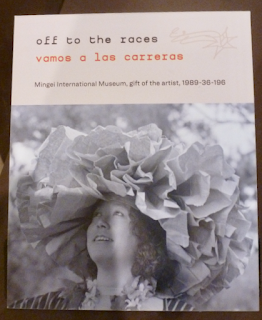 |
Fractured, Linda Evans.
|
On October 21 and 22, Quinobequin Quilters held its biennial show, the first since the beginning of the pandemic, I believe. (By the way, if you're wondering whatever "Quinobequin" means, I'll tell you at the end of the post.)
Over 130 quilts were displayed in the Needham Masonic Hall. It was nourishment for the eyes and the soul, to see quilts and people again.
 |
Fractured, detail.
|
This blog just features a few of the many lovely quilts, with some of their stories.
 |
Quilts on exhibit.
|
 |
Chocolate Layer Cake, Nancy Weinreich.
|
The quilt above was made from a "layer cake" packet - a selection of precut pieces, stacked and bundled to form a "cake", from a distributor's fabric range. Color choices will always be pleasing, as the textile designer has done the work of selecting for hue and value already. Love the warm neutrals with accents of toned blue and red.
 |
Wild One Block Wonder, Jane Evans.
|
Next, a quilt of an entirely different color. Ms. Evans made this quilt from fabric given to her by her mother. Unusual colors but I love it. The fussy cutting and assembly for each hexagon displays a high degree of skill.
 |
Wild One Block Wonder, detail.
|
Excellent piecing is demonstrated in the quilt below too, made by the artist for her granddaughter's "big girl" bed. The pattern was designed by Elizabeth Hartman.
 |
Forest Friends, Beth Green.
|
 |
Forest Friends, detail.
|
 |
Hexies for All, Penelope Kulko.
|
We see hexagons again in the blue and white quilt, inspired by Katja Marek's book "The New Hexagon." Blue and white is a traditional color scheme but works well in modern quilts too.
 |
Hexies for All, detail.
|
 |
Time to Smell the Flowers, Maxine Rosenberg.
|
Still more hexagons! According Ms. Rosenberg:
I constructed this English Paper Pieced Quilt during Covid from a picture on the Paper Pieces Website. Unable to buy plants for my outside garden the basket and butterfly reminded me of the pleasure we got from winged visitors to our garden.
 |
Block of the Month designed by Linda Evans.
|
Guild member Linda Evans designed the Block of the Month activity above - each month a pattern was sent out to participants featuring one of the quilt blocks. Choice of fabric, sashing and assembly are individual decisions. This is master class is variations on a theme and a revelatory look at the impact of color and contrast in pattern interpretation. Well done all!
 |
Resilience, Robin Jaeger.
|
Flowers and gardens and other aspects of nature inspired more quilts. The Resilince quilt above was based on "Whimsical Garden" by Tina Curran. This quilt is displayed in the Town of Needham's New Public Safety Building and was a "thank-you" present to Needham's essential safety workers.
 |
Resilience, detail.
|
 |
Country Journal, Marlene Thurston.
|
Can you hear the clucking? The nature theme continues with a flock of fowl, in the applique quilt. This quilt was begun in 2002 and finished last year. I'm a firm believer in the Slow Fiber movement myself.
 |
Country Journal, detail.
|
 |
The Spirit of Aloha: A Hawaiian Quilt, Evy Megerman.
|
Ms. Megerman's daughter and son-in-law met in Hawaii and it is a special place for them. I hope they appreciate the quilt. The quilt below was also made for a family member. According to artist Kulko:
A few years ago my son opened a skateboard shop in his Brooklyn [neighbor]'hood. I helped him get the store ready for opening by matting and framing way cool, totally hip skateboarding photographs and other skater paraphernalia. Along the way I had the idea for this quilt, marrying motion, the boarder and graffiti. In the end, my son gave me a sweet, sad look, saying, "Mom, it's great, and we will NEVER hang a quilt in the skate shop." It was a long shot, apparently too long a shot.
 |
Skater, Penelope Kulko.
|
Wheels are celebrated in the bicycle quilt below, an original design by maker Gotlib; a gift for her husband. This quilt evidently did make it onto a wall.
 |
The Bicycle, Lorraine Gotlib.
|
For every show the guild makes a raffle quilt, seen below. Sadly I didn't win this wondeful quilt, as it's one of the best raffle quilts I've ever seen.
 |
Snowdrops, the raffle quilt.
|
Finally, a cheerful little applique quilt with a little house and tree motif which just made me smile. What a great quilt show!
 |
Temecula Sampler, Bryn Macy Wood.
|
So, the word "Quinobequin" - it's the Native American name for the Charles River, and it means "meandering river". Needham is bordered to the east and south by the River.

































